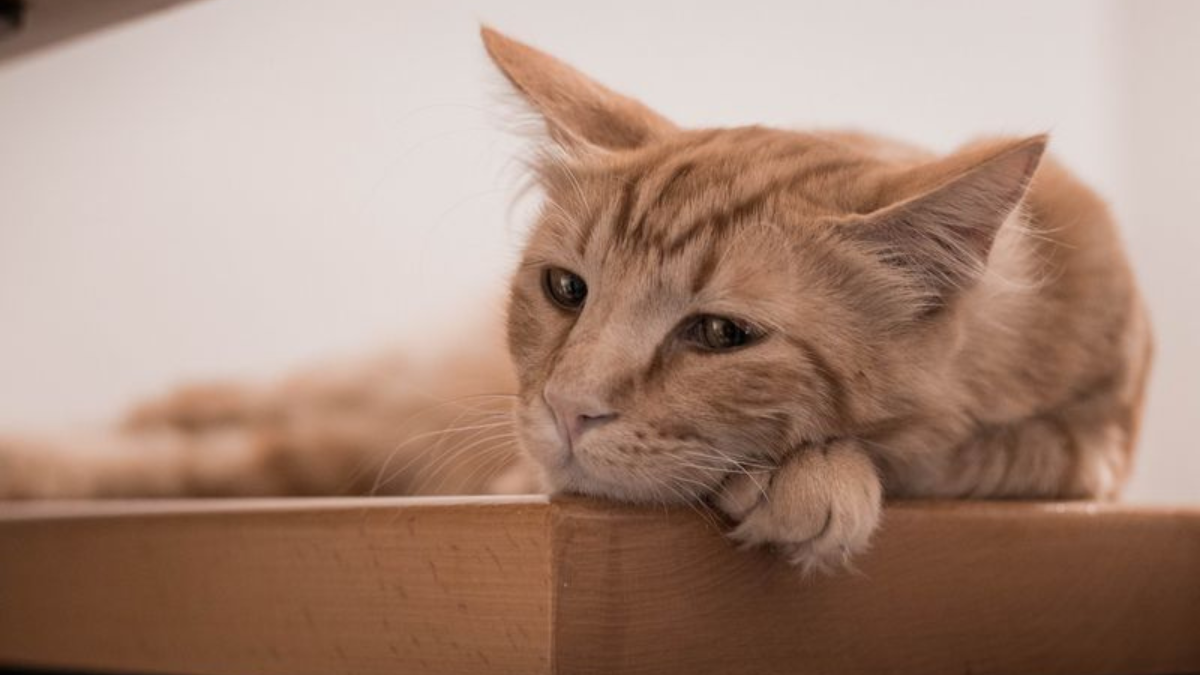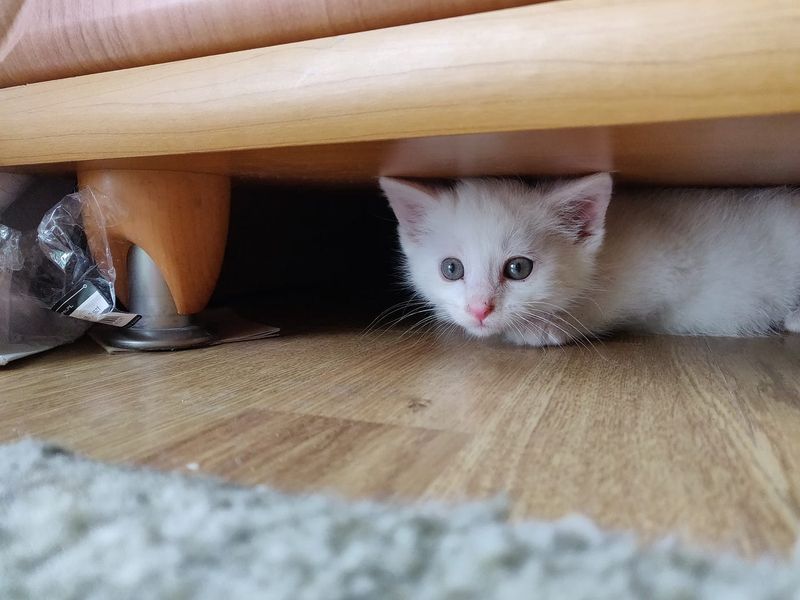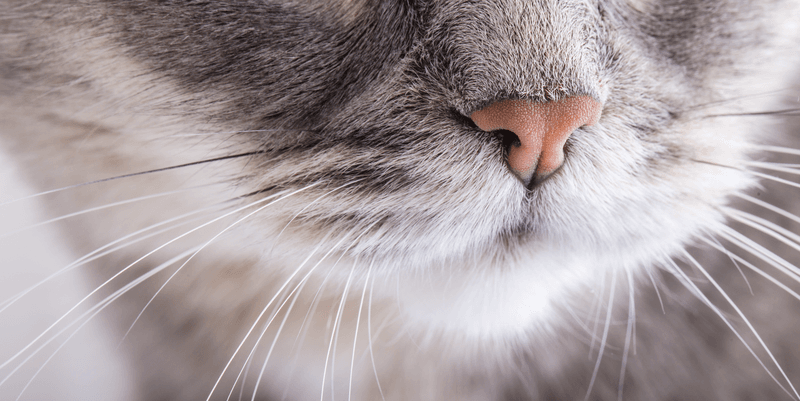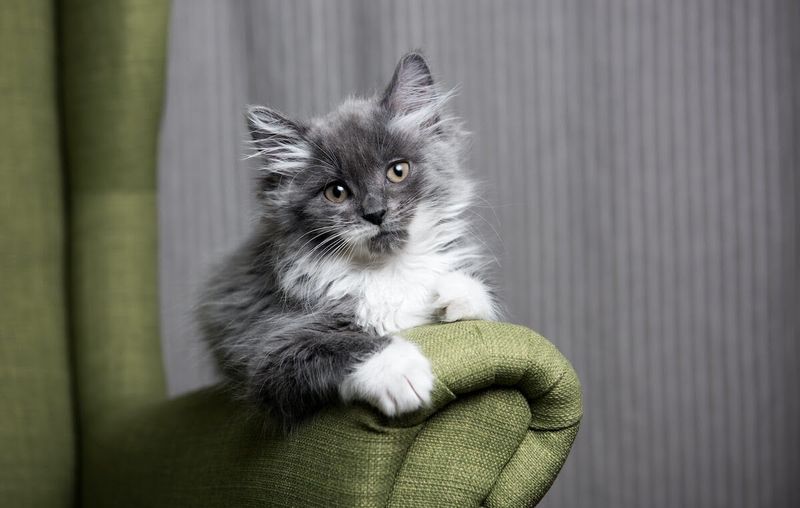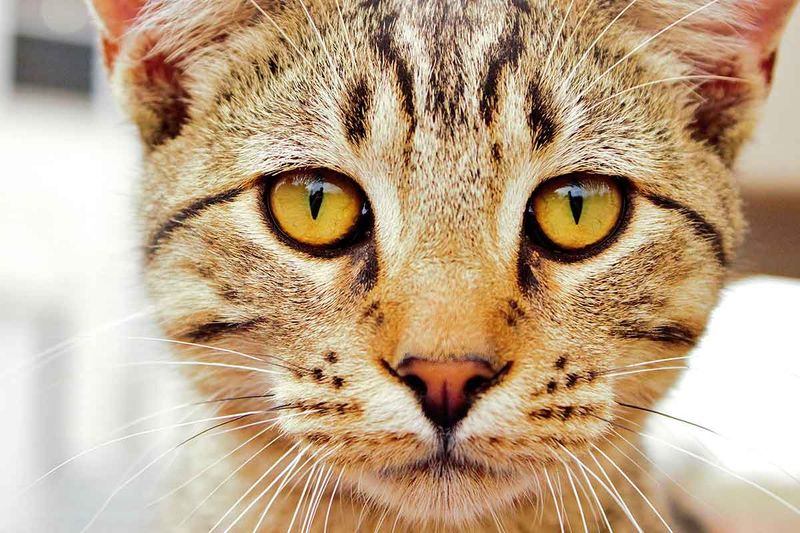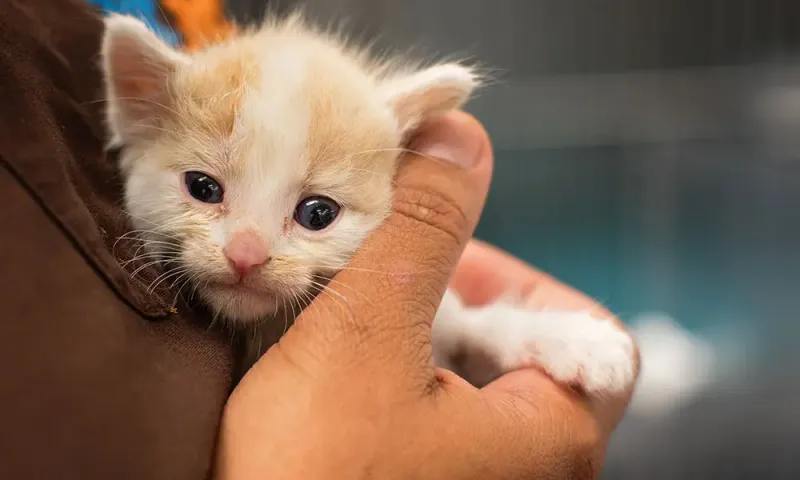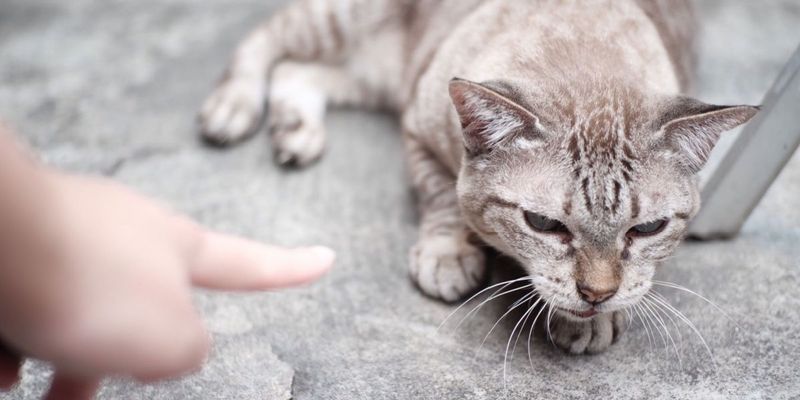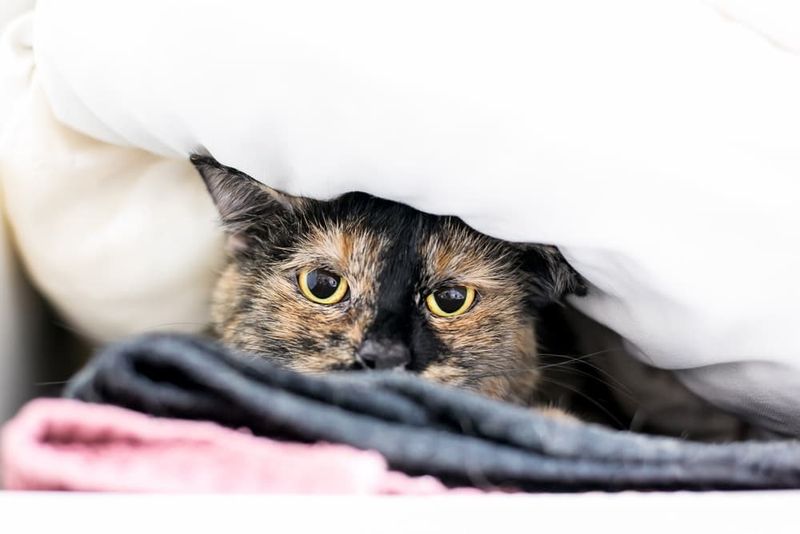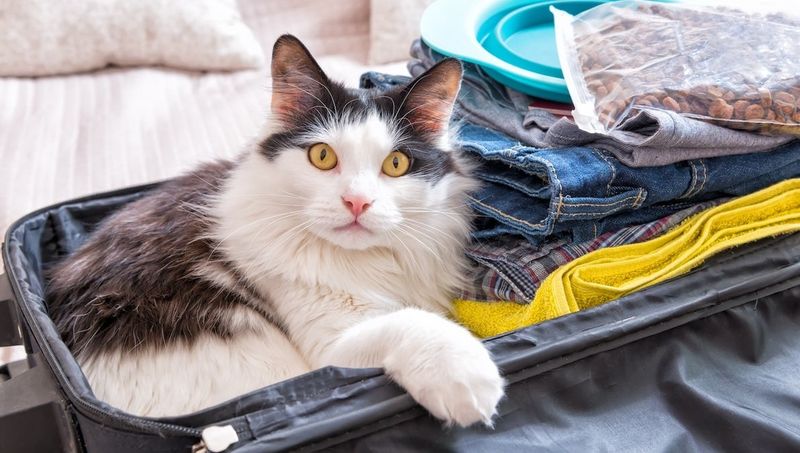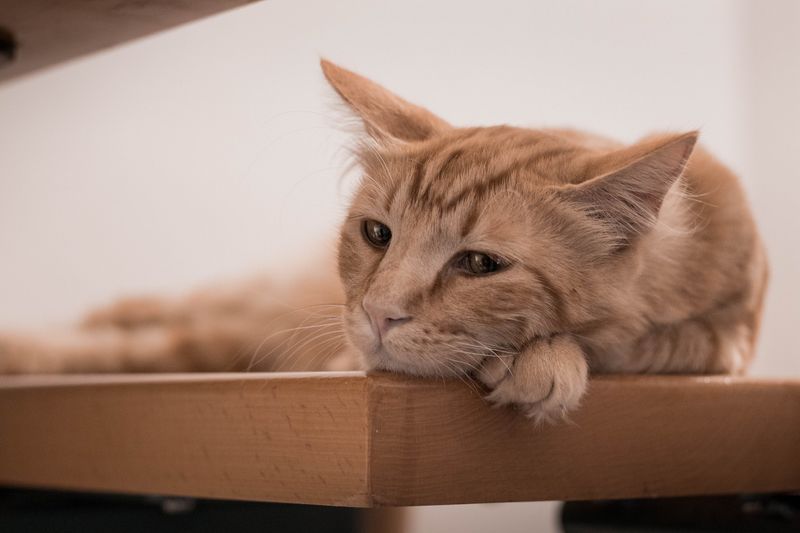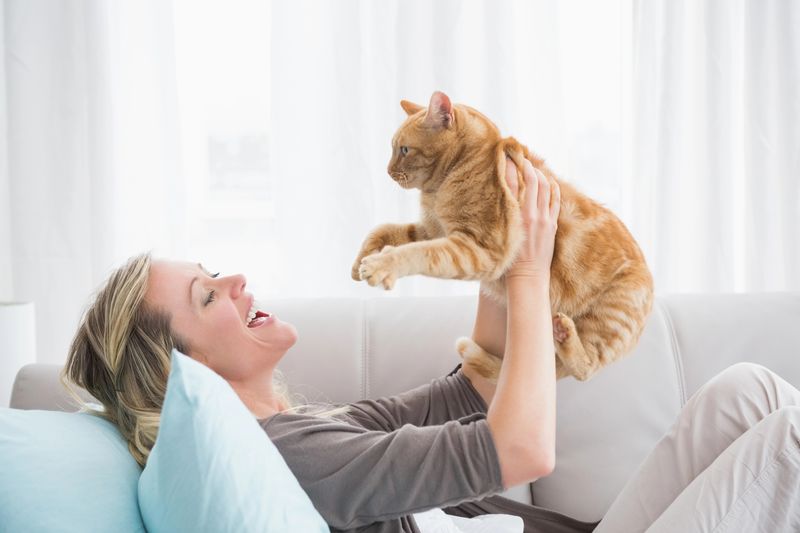📖 Table of Content:
- 1. Loud Music and Sudden Noises
- 2. Forcing Physical Affection
- 3. Irregular Feeding Schedules
- 4. Bringing Home Strong Scents
- 5. Rearranging Furniture Without Transition Time
- 6. Staring Contests and Direct Eye Contact
- 7. Introducing New Pets Without Proper Acclimation
- 8. Inconsistent Litter Box Maintenance
- 9. Punishing Natural Behaviors
- 10. Constant Household Traffic and Visitors
- 11. Traveling With Cats Unprepared
- 12. Ignoring Medical Symptoms
- 13. Using Punishment-Based Training Methods
Our feline friends may seem independent, but they’re actually quite sensitive to our behaviors. Cats thrive on routine and predictability, so when we disrupt their world with certain habits, they can become anxious or stressed. Understanding what upsets our cats helps us create a more peaceful home environment for them. Here’s how we might be stressing out our furry companions without even realizing it.
1. Loud Music and Sudden Noises
Cats have incredibly sensitive hearing – much more powerful than ours. What seems like acceptable volume to you might be overwhelming for your cat’s delicate ears. Those bass-heavy songs or action movies with explosions can be particularly distressing.
Many cats will hide under furniture or flee the room when exposed to loud sounds. Over time, this noise stress can lead to behavior problems like inappropriate urination or excessive grooming.
Try using headphones when enjoying loud entertainment, and give your cat a quiet space in your home where they can retreat when things get noisy.
2. Forcing Physical Affection
Unlike dogs, most cats prefer to initiate contact on their terms. Picking up your cat when they’re not in the mood or hugging them tightly can trigger their stress response. Those squirming movements aren’t cute – they’re signs of discomfort.
Cats value their personal space and independence. When we ignore their boundaries, they learn they can’t trust us to respect their needs.
A better approach? Let your cat come to you. Offer a gentle extended finger for them to sniff, and if they rub against you, that’s your invitation for pets. Always allow them an escape route during interactions.
3. Irregular Feeding Schedules
Food security matters tremendously to cats. In the wild, they hunt multiple small meals throughout the day, and their internal clocks are finely tuned to expect food at certain times.
When mealtimes become unpredictable, cats experience genuine anxiety. You might notice increased vocalization, pacing, or even aggressive behavior as your hungry cat’s stress levels rise.
Set up automatic feeders if your schedule varies, or at minimum, try to keep mealtimes within the same hour each day. For some cats, free-feeding with measured portions works better than scheduled meals.
4. Bringing Home Strong Scents
Your cat’s nose is approximately 14 times more sensitive than yours. Those scented candles, essential oil diffusers, and strong cleaning products that smell pleasant to you can overwhelm your cat’s senses and cause respiratory distress.
Cats use scent as a primary way to mark territory and feel secure. When we introduce powerful new smells, we disrupt their sense of safety and familiarity.
Opt for unscented cleaning products when possible, and keep diffusers or candles in well-ventilated areas away from your cat’s favorite spots. Always ensure your cat can access fresh air and scent-free zones.
5. Rearranging Furniture Without Transition Time
A sudden change in furniture placement might seem exciting to you, but for cats, it can cause real confusion. They rely on consistent environments and known hiding spots to feel safe and secure.
When their territory suddenly changes, cats can experience genuine anxiety. Some may hide for days or display stress behaviors like inappropriate elimination or excessive grooming.
If you need to redecorate, do it gradually. Move one piece at a time and give your cat several days to adjust before the next change. Provide extra attention and treats during transition periods.
6. Staring Contests and Direct Eye Contact
Direct eye contact is a challenge or threat in cat language. When we gaze lovingly into our cat’s eyes, they often interpret this as confrontational or predatory behavior. Notice how cats who trust each other blink slowly or look away frequently?
Your feline friend might feel cornered or intimidated by prolonged staring, especially from strangers. This common human behavior can make even confident cats anxious in otherwise comfortable settings.
Show affection through slow blinks instead – cat behaviorists call this the “kitty kiss.” Glance at your cat briefly, then slowly close your eyes for a second before looking away. This communicates safety and trust in cat language.
7. Introducing New Pets Without Proper Acclimation
Bringing home a new pet without proper introduction protocols ranks among the most stressful experiences for cats. The sudden appearance of another animal threatens their territory and resources, triggering deep insecurity and defensive behaviors.
This stress can manifest as aggression, inappropriate elimination, excessive hiding, or even illness. The trauma can create lasting tension between pets.
Always introduce new animals gradually over weeks, not days. Use separate spaces with scent exchange first, then controlled visual contact before any physical interaction. Respect your existing cat’s need for gradual adjustment and provide plenty of vertical space and escape routes.
8. Inconsistent Litter Box Maintenance
Most cats are naturally clean animals with strong preferences about their bathroom facilities. Using a dirty litter box causes genuine distress – like being forced to use an unflushed, unsanitary public restroom with no alternatives.
When litter boxes become too soiled, cats face an impossible choice: use an offensive space or hold their bodily functions. This dilemma creates anxiety and can lead to urinary tract issues or inappropriate elimination around your home.
Scoop litter boxes at least once daily, and completely change the litter weekly. Provide one more box than the number of cats in your household, placed in quiet, accessible locations away from food and water.
9. Punishing Natural Behaviors
When cats scratch, climb, or knock things over, they’re simply expressing natural instincts, not trying to annoy you. Harsh responses like yelling or spraying can confuse them and damage your bond.
Your cat doesn’t understand why their normal behaviors suddenly result in scary reactions from their human. This punishment damages your bond and creates anxiety around normal activities.
Instead of punishment, redirect unwanted behaviors to appropriate outlets. Provide scratching posts with appealing textures, cat trees for climbing, and interactive toys for hunting play. Reward your cat when they use these appropriate alternatives.
10. Constant Household Traffic and Visitors
Frequent guests, parties, or households with constant comings and goings can overwhelm even sociable cats. Each new person brings unfamiliar scents, unpredictable movements, and potential interactions that disrupt your cat’s sense of territorial security.
Cats thrive on predictability and routine. A constantly changing social environment prevents them from fully relaxing in their own space.
Create a designated quiet room where your cat can retreat during busy times. Stock it with water, comfortable bedding, and familiar toys. Teach guests (especially children) to respect your cat’s space and never force interaction. Consider pheromone diffusers to create a calming atmosphere during particularly busy periods.
11. Traveling With Cats Unprepared
Car rides and travel experiences rank among the most stressful events for most cats. The combination of confinement, motion, strange sounds, and unfamiliar surroundings can trigger extreme anxiety. Those pitiful meows aren’t just complaints – they’re expressions of genuine distress.
Without proper preparation, travel can traumatize cats and damage their trust in you. The stress hormones released during these experiences can linger for days.
Start acclimating cats to carriers young, using positive associations with treats and comfortable bedding. For necessary travel, use pheromone sprays, familiar-smelling blankets, and cover carriers with breathable fabric to reduce visual stimulation.
12. Ignoring Medical Symptoms
Hiding pain and sickness is a natural survival skill for cats inherited from their wild ancestors. When subtle discomfort signs are missed or dismissed, cats are left enduring silent suffering that can cause serious stress.
Physical discomfort from untreated conditions like dental disease, arthritis, or urinary issues compounds with the frustration of not receiving help. This combination can lead to depression, aggression, or withdrawal.
Schedule regular veterinary check-ups even when your cat seems healthy. Pay attention to changes in litter box habits, grooming, appetite, or activity levels. Remember that behavior problems often have medical roots that need addressing before training can succeed.
13. Using Punishment-Based Training Methods
Spray bottles, loud noises, or physical corrections don’t teach cats what to do – they just create fear and anxiety. Cats don’t connect punishment with specific behaviors the way humans expect. Instead, they associate the unpleasant experience with you or their environment.
These aversive methods damage your relationship and can trigger stress-related health issues. Your cat learns their home isn’t safe, but doesn’t understand what you want.
Positive reinforcement works much better with felines. Reward behaviors you like with treats, play, or attention. For unwanted behaviors, simply redirect to appropriate alternatives and make inappropriate options less appealing through environmental management.
